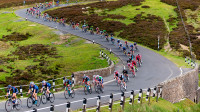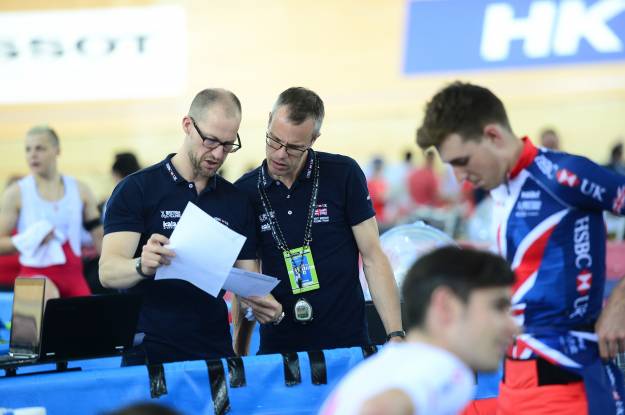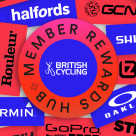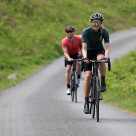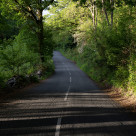Knowledge Level: Intermediate
With the Great Britain Cycling Team heading to Watopia on 9th December to take part in the 2020 UCI Cycling Esports World Championships, we talked to Elinor Barker to get some top tips for racing on Zwift.
Warm-up well
Zwift races tend to be short and sharp, so you need to be ready to go from the gun both physiologically and psychologically and, to do this, you need a decent warm-up. Work back from your start time and allow at least 20 minutes to get your legs firing and to find your focus. Head to one of the flat courses on Zwift, such as Tempus Fugit in Watopia, and follow a protocol such as the British Cycling 20-minute warm-up before heading to the start pen a few minutes before the off. You can keep spinning your legs while on our virtual turbo in the pen.
Stay cool
If you start overheating, you’ll start shipping watts. Make sure you have a decent fan and that your pain cave is well ventilated. We’ll be racing in Kalas Verano kit that’s specially designed to keep you cool as the temperature rises.
Fuelling and hydration
With the majority of Zwift races lasting 20-60 minutes, the two concerns are ensuring that you have enough energy and that you’ve allowed enough time for digestion. Working back from the time of the start of your race, including your warm-up, you should allow 2-3 hours from you last full meal.
If you’ve got more time than this, such as a late afternoon/early evening race and your last main meal would have been lunch, you’ll probably need a light snack 1-2 hours beforehand. What to have and how close to the off is very personal and it’s worth experimenting. A caffeinated gel 0-15 minutes before starting your warm-up can be a good option.
During a typical Zwift race, you shouldn’t require any additional fuel, but you should keep sipping on water with electrolytes throughout the race. You should look to consume approximately 500-750ml per hour.
Again, as a Zwift race is usually pretty short, you shouldn’t need any specific recovery products as long as you’ll be eating within a couple of hours of the race. The priority is going to be replacing lost fluids as, no matter how many fans you have, you’re going to sweat!
Be ready for the start
Zwift races always start hard, really hard! You want to be spinning at well above your FTP before the countdown hits zero and expect to hold that effort for a few minutes. Find a wheel, dig-in, react to any gaps and trust that it will settle down. If you do miss an early split, find a group to work with, chalk it up to experience and keep riding hard to get a decent workout.
Use your power-ups wisely
The Power-ups available vary from race to race but they can play a decisive role in the outcome of races.
The Power-ups you need to be aware of are:
Aero Boost (helmet): Makes you more aero for 15 seconds. Use on flats, descents and for finishing sprints. It’s rare that a Zwift sprint is won without an aero boost so, if you get one, it can be worth holding it until the end of the race.
Lightweight (feather): Reduces your weight by 10% for 15 seconds. Use on climbs.
Draft Boost (van): Doubles the draft effect for 30 seconds. Use on flats and descents when you’re in a bunch or following another rider.
Cloaking (ghost): Makes you invisible to other riders for 10 seconds. Use to sneak off the front without other riders noticing.
Burrito: Makes you un-draftable for 10 seconds. Use when attacking off the front of the bunch.
Save your energy
Just like racing IRL, it’s often not the rider that puts out the biggest wattage that wins but the one that races smartest. Sit in the wheels and minimise spending time with your nose in the virtual wind. This takes a bit of practice and, to avoid pinging off the front and then shooting out the back, changes in pressure on your pedals has to be really subtle.
Most Zwift races come down to a sprint and, apart from on big climb finishes, it’s very rare that a solo break sticks. There’s normally a whittling down process as riders get spat from the lead group and, in most cases, if you can hang in there and be patient, you’ll be in with a shout at the end.
Push over the top of rises
Watch out as you crest any climbs and don’t be tempted to ease off as the gradient relents. Invariably riders tend to keep the pressure on and any gaps that form on descents are incredibly hard to close.
Pick your races
There are loads of races to choose from on Zwift so, whether you’re a sprinter or a climber, you’ll find one that suits you. You’ll soon find the courses that you prefer and, with TT’s, handicap, points and age group (rather than w/kg) categorised races, there’s a race for everyone.
Make sure your set-up doesn’t let you down
You don’t want your race ruined by a tech malfunction so make sure you’re running the most up to date version of Zwift and that your broadband/wifi is reliable. You also want your data to be as accurate as possible and to minimise variance from race to race.
Enjoy it!
The great things about racing on Zwift are that there’s always another race to enter, no travelling, no entry fee and you can compete with riders from all across the globe. Above all, it’s a fun and motivating way to get a great workout so, enjoy it, don’t take it too seriously, have fun trying different tactics and course and, of course, Ride On!




